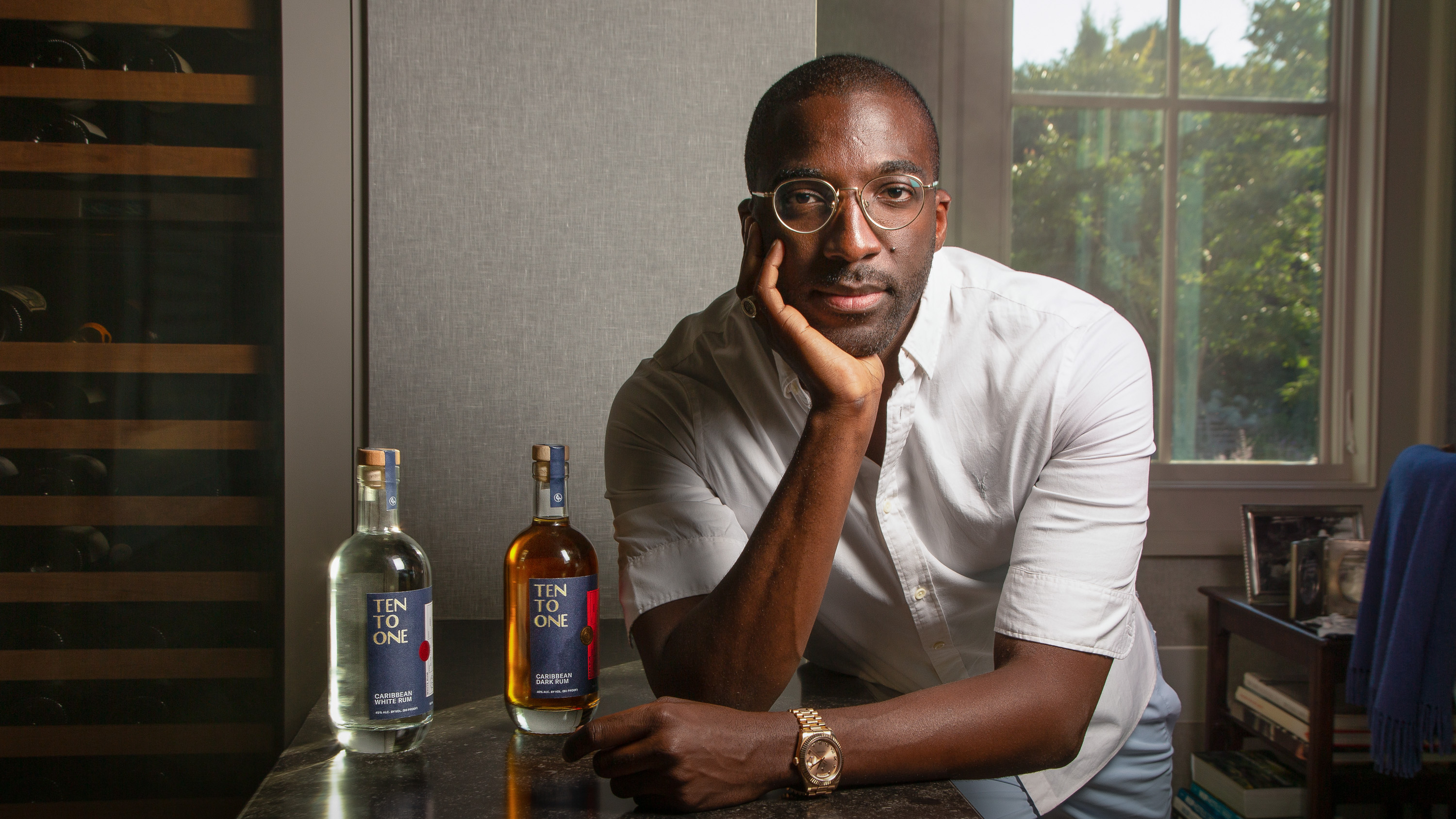Ten to One founder aims to change people’s perception of rum
Marc-Kwesi Farrell ’03

When you think of rum, what comes to mind? A strawberry daiquiri? A piña colada with a cocktail umbrella? Marc-Kwesi Farrell ’03 thinks there is a lot more to rum than that, and he’s on a mission to reinvent the spirit as a versatile, top-shelf drink.
“If you look at rum today, it is saddled with this overly narrow, somewhat caricatured view of what the spirit is meant to represent,” explains Farrell, a native of Trinidad and Tobago who launched Ten to One Rum in New York City in 2019. “There is this perception of rum as a lower-end spirit for your sugary spring-break cocktails.” But cocktails made with Ten to One, he says—think rum negroni or rum cucumber collins—reflect the “dynamism, vitality, and uniqueness that comes with the fabric of Caribbean culture.”
When he arrived in Cambridge as a first-year student, Farrell did not expect to end up in the spirits industry. “I was a 16-year-old when I got to MIT, and I don’t know if there are a lot of 16-year-olds who really know, necessarily, what it is they want to do in life,” he says, laughing. Farrell majored in chemical engineering but says his exposure to finance, economics, and business at the Institute helped him form the dream of starting his own company.
To learn the ropes, he began his career in management consulting. He did a stint in private equity, earned a master’s in technology policy at the University of Cambridge and an MBA at Harvard, and launched his first startup in sports and media, which he says saw initial success but didn’t scale the way he’d hoped. Then Farrell joined Starbucks, rising to become vice president of global retail and beverage innovation.
Serving as an executive for the world’s largest coffeehouse chain renewed his own sense of purpose, and he decided to launch a brand that would honor his Caribbean roots. “When I think about Caribbean culture, we have this uncanny ability to activate celebration. It really is a way of life for us,” says Farrell. “Rum plays a role in so many of those celebrations. It really is part of the fabric, part of the essence of what we consider to be celebration in the Caribbean.”
Farrell named his startup Ten to One to pay homage to the West Indies Federation, which united 10 Caribbean countries from 1958 to 1962. Although rum can be found in most sugar-producing regions of the world—it is produced by fermenting and then distilling sugarcane juice or molasses—its origin is attributed to the Caribbean.
The company currently sells two high-quality rums sourced from some of the most distinct and superior producers throughout the region, now available in 15 US states. The dark version is a blend of rums from Trinidad and Tobago, Barbados, Jamaica, and the Dominican Republic; the white is a mix of rum from the Dominican Republic and Jamaica. Ten to One also sells limited-edition releases, such as a 17-year-old single-cask reserve.
Although the brand is a relative newcomer, Ten to One has received nearly 70 awards as of 2022, making it the most decorated rum in the US. In October 2021, singer-songwriter Ciara joined the company as investor and co-owner. While such initial successes have been gratifying, Farrell says he is most excited to change the way people think about rum—not just for his company, but for the industry.
“When I think about what success looks like, whether that’s three, five, 10 years down the path, my hope is that we are the brand that has become synonymous with shifting the perception of the rum category,” he says, much like how Starbucks reinvented the coffeeshop. “I’m really hoping that Ten to One can be that in the world of rum.”
Keep Reading
Most Popular
Large language models can do jaw-dropping things. But nobody knows exactly why.
And that's a problem. Figuring it out is one of the biggest scientific puzzles of our time and a crucial step towards controlling more powerful future models.
The problem with plug-in hybrids? Their drivers.
Plug-in hybrids are often sold as a transition to EVs, but new data from Europe shows we’re still underestimating the emissions they produce.
How scientists traced a mysterious covid case back to six toilets
When wastewater surveillance turns into a hunt for a single infected individual, the ethics get tricky.
Google DeepMind’s new generative model makes Super Mario–like games from scratch
Genie learns how to control games by watching hours and hours of video. It could help train next-gen robots too.
Stay connected
Get the latest updates from
MIT Technology Review
Discover special offers, top stories, upcoming events, and more.